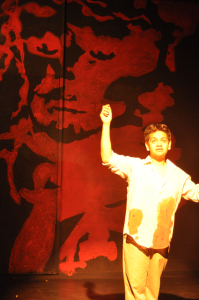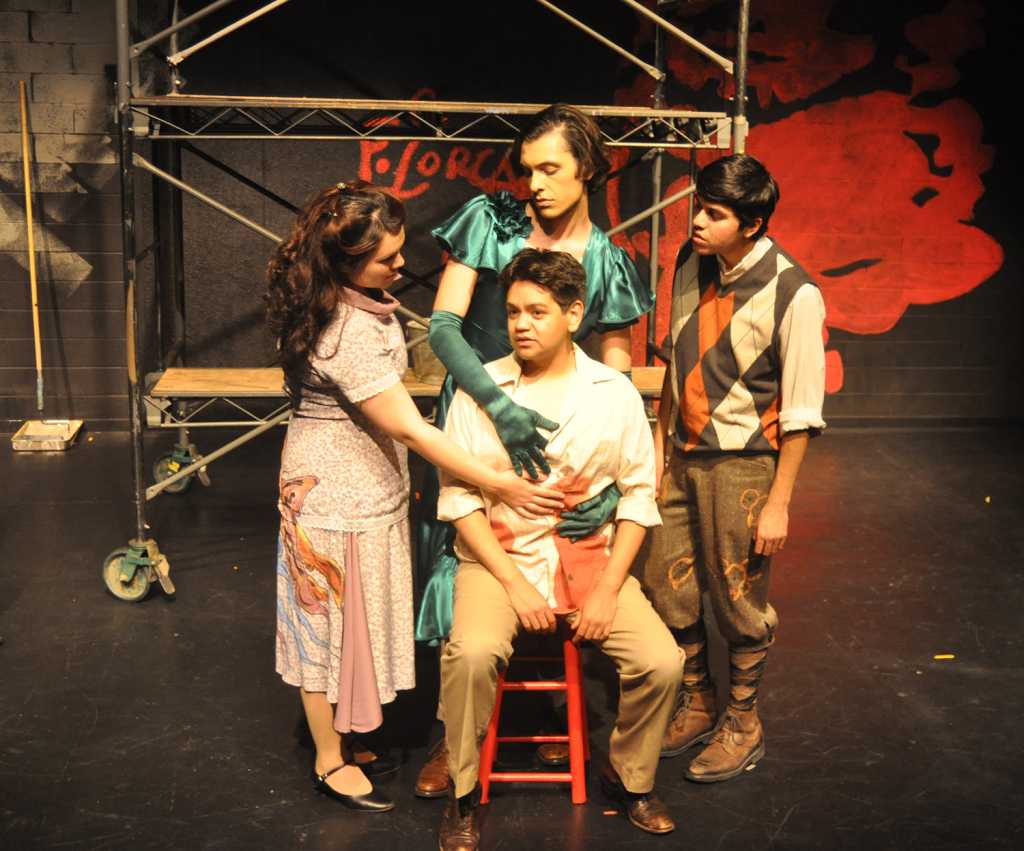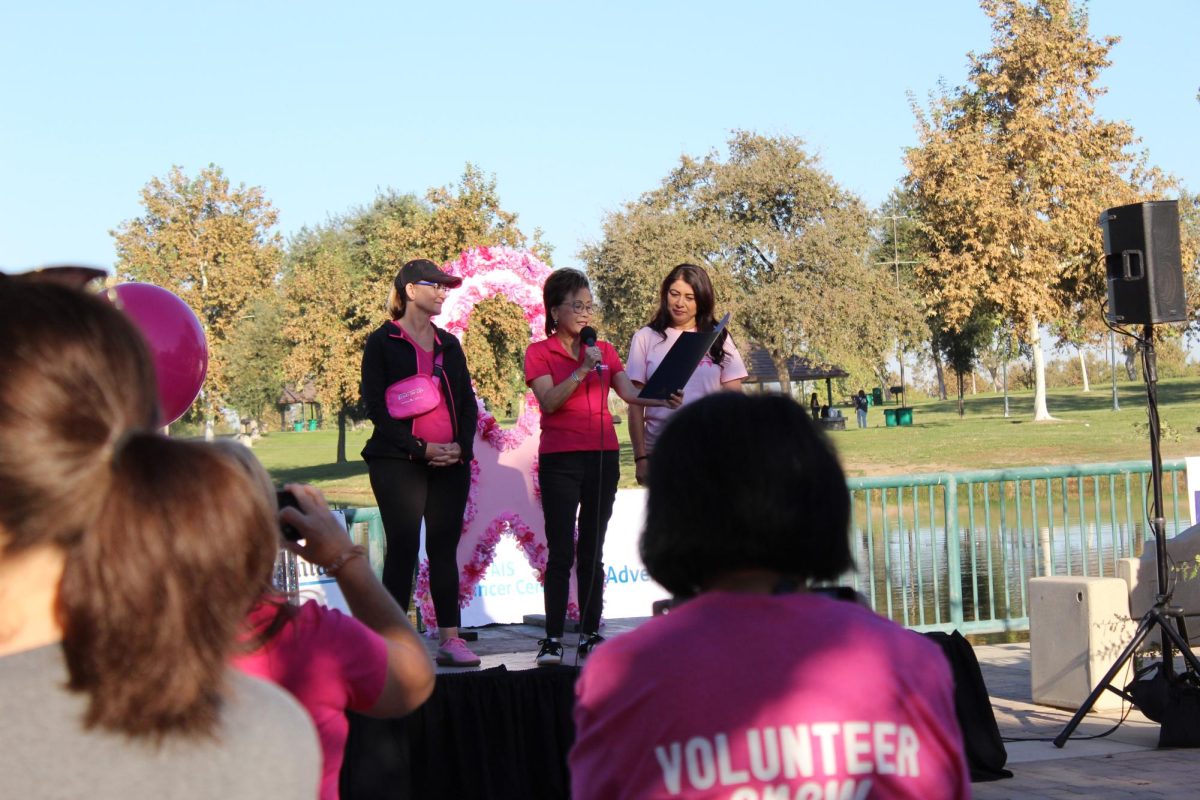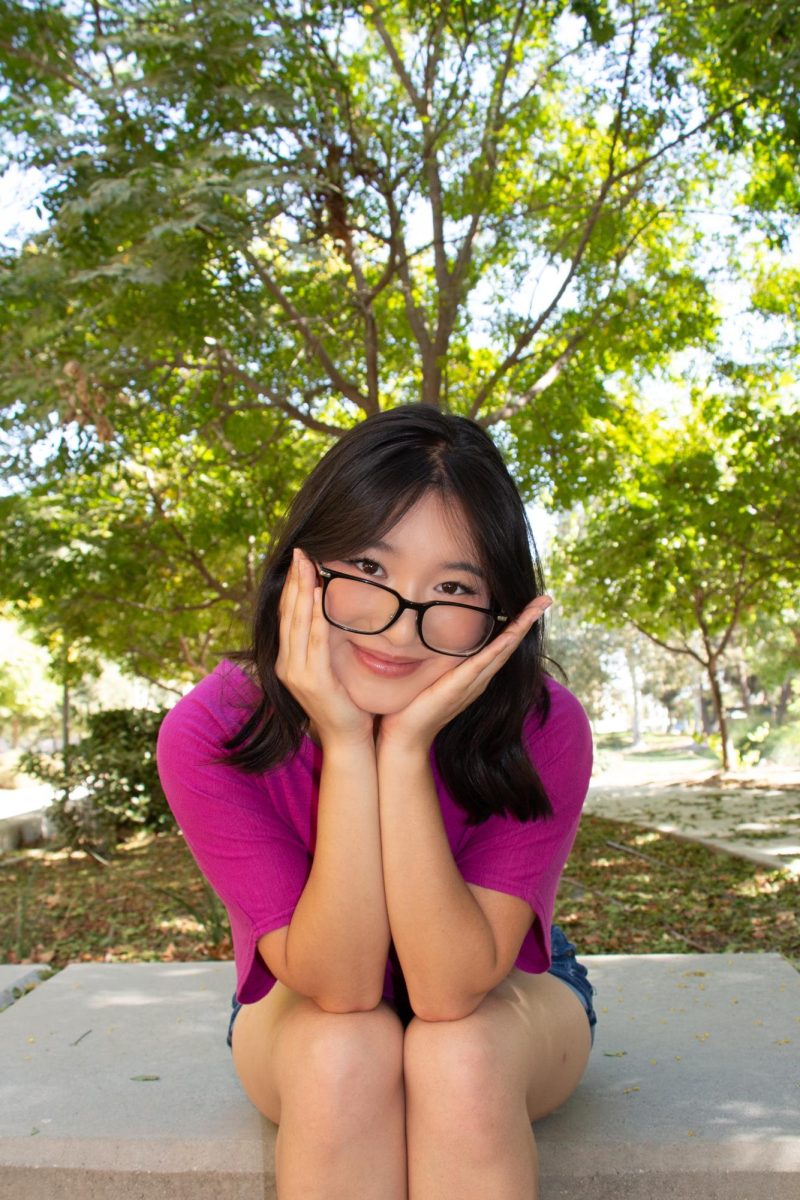
Set and costume designs are just as important as performance when it comes to telling a story. The California State University, Bakersfield theatre and music department presented Nilo Cruz’s “Lorca in a Green Dress” starting Thursday, Feb. 26, through Sunday, March 1, at the Dore Theatre.
The play tells a story beyond life and death with the Spanish Civil War as its backdrop. The Spanish poet Frederico Garcia Lorca, murdered by the fascists in 1936, wakes up in a dream-like state and is greeted by his own spirits. Left in disbelief of his death, Lorca’s spirits take him on a journey to reenact to him his death.
The Dore Theatre’s backdrop was turned to dream-like mural signifying Lorca’s death. Additionally, it was lit red to amplify the time period of the setting, and declare that it was wartime.
Still not believing he is dead, Lorca believes that his friend, the painter Salvador Dali, was only playing a joke on him, as Dali always saw things in different perspectives.
Stage costume is a tool that is beneficial for story telling. CSUB’s theatre department was successful at depicting the story through the cast’s clothes presented at the play.
The flamenco dancers definitely were the most important indications of the setting of the play. Once they got on stage, the audience was taken back to the Spanish Civil War. However, the stunning flamenco costumes should have been fuller and more intricate, as one of the dancers drives much of the action in the play. The contrast between the main dancer, and the secondary dancer, was very successful, though.
The men in the play were cleverly dressed to show their socio-economic status and roles in society. In this respect, the story was told clearly. Civilians were easily distinguishable from the men in the military. And there was dead Lorca—wearing a white collared shirt, covered in blood, and had three gunshot wounds. Having the story revolve around him, Lorca’s costume should have been a little more rugged and torn to signify his struggle and death. Nevertheless, “Bravo” to the men of the play.
Finally, we cannot talk about “Lorca in a Green Dress” without talking about Lorca in a Green dress. Seeing a man in a dress is always entertaining, and it takes serious commitment for a man to do so. I applaud Robert Corona for having the confidence to do so. Now, the green dress was very Spanish inspired with the ruffles going down the skirt and also the sleeves. It was as if he was a flamenco dancer himself. The green dress was definitely the highlight of the play, not only for the entertainment factor, but for the story that it portrays.
Kudos to the cast and crew that worked on “Lorca in a Green Dress.”








